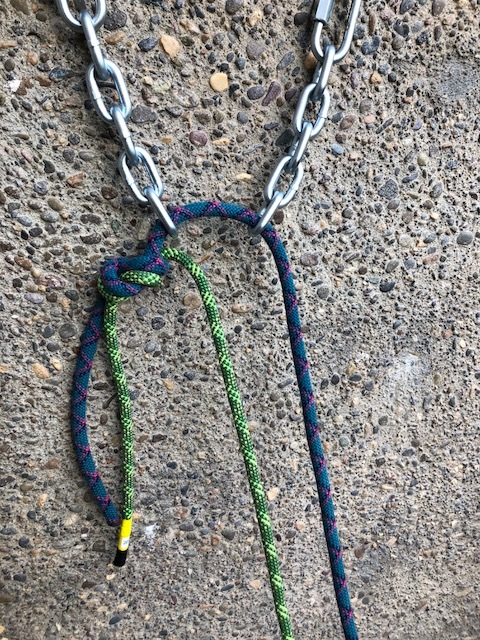
Alpine Tips
Carabiner inside the master point knot
If you clip a carabiner inside the master point knot on your anchor, you probably won't have to resort to your teeth or needle nose pliers to get it untied.
Now, if you've been at the game for a while, you may know this Crafty Rope Trick (CRT). But it seems to be new to a lot of folks, so it's worth a mention.
When you're tying off a runner or a cordelette for a statically equalized anchor, that master point knot can be very difficult to untie, especially if you’re using skinny webbing, or it gets wet, or if it takes a big load, or all of the above.
To make untying it a lot easier, clip a carabiner in the master point knot after you tie it, and before it’s loaded.
Important: This carabiner is not load bearing at all, and you should not clip anything to it. It’s only purpose is to make untying the knot easier when you break down your anchor.
Try to use a notchless / keylock carabiner with a small nose on it so you can easily unclip it from the loaded knot. In the photo below the carabiner is a locker, but it doesn’t have to be.
The black locking carabiner inside the master point knot will make untying the sling a lot easier.
Is it a knot, hitch, or bend?
Does every climber need to know these definitions? No. But for the Type A personality, (which is probably most of us climbers) the difference between these three different terms is actually quite interesting.
Not all “knots” are true knots. Technically, a true knot is capable of holding its form on its own without another object such as a post, eye-bolt, or another rope to anchor it.
Example: Figure 8 on a bight
A hitch, by contrast, must be tied around something to hold together; remove the thing it’s tied to, and a hitch falls apart.
Example: clove hitch. Unclip this from the carabiner, and you don't have a knot at all.
A bend is a knot used to join two rope ends. Example: flat overhand bend
(Formerly known as the "EDK", or "European Death Knot"; let's not use that term anymore, OK?)
In practice, we use “knot” as an umbrella term to cover all these types, but the distinction is useful to know.
If the context makes it unclear what you mean, you can use the term “hard knot” to distinguish a true knot from a hitch or bend.






